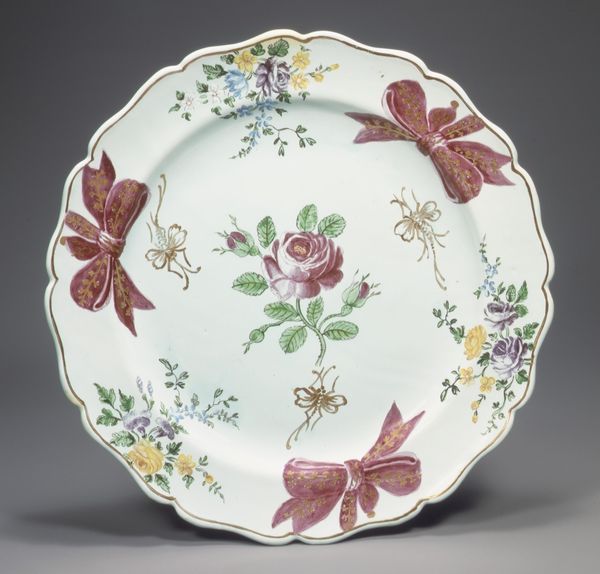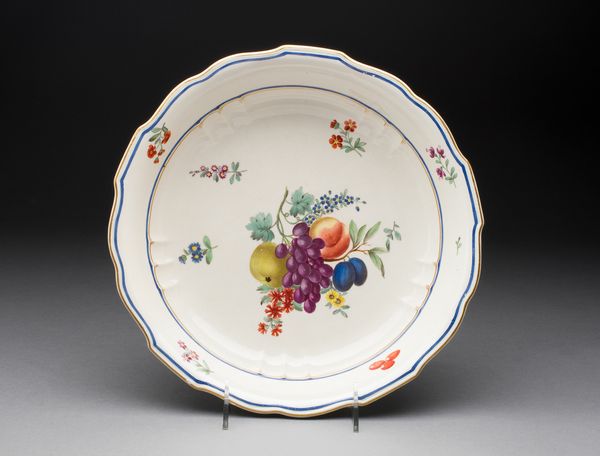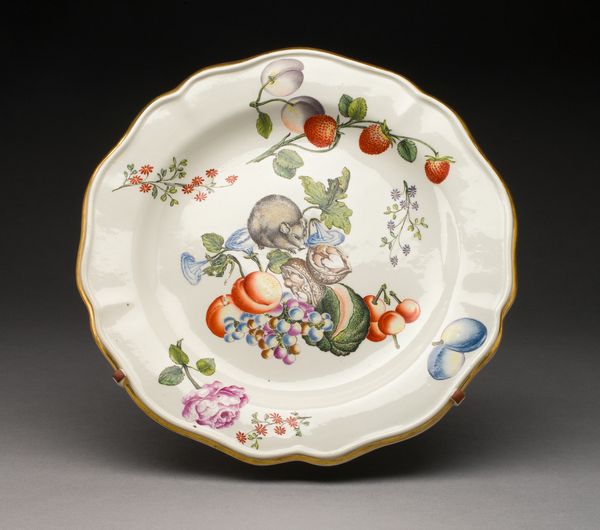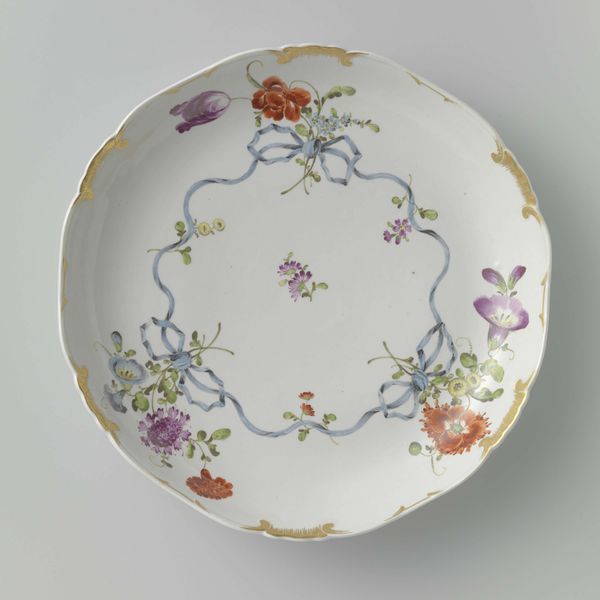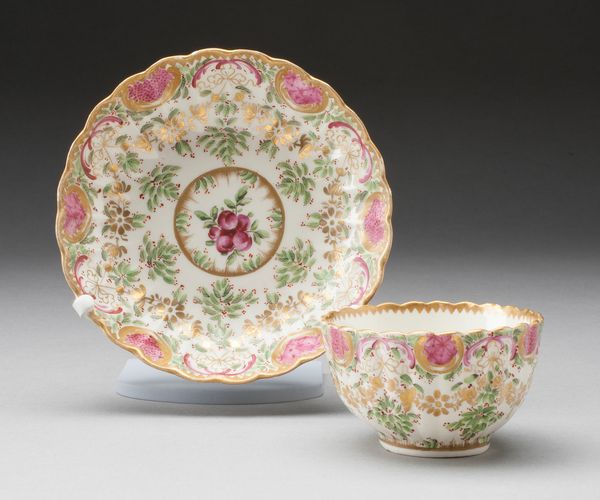
Dimensions: Diam. 24.8 cm (9 3/4 in.)
Copyright: Public Domain
Curator: This porcelain dish was created by the Worcester Royal Porcelain Company between 1770 and 1775, now residing here at the Art Institute of Chicago. The Rococo style is readily apparent. Editor: My immediate impression is one of delicate opulence. The asymmetrical arrangement of fruit and butterflies lends it a sense of lively abundance, almost overflowing with richness. Curator: Indeed. Note how the scalloped edge, trimmed with gilding and green enamel, creates a dynamic visual rhythm, echoing the shapes of the fruit within. The artist’s masterful manipulation of glaze results in subtle gradations of tone and color. Editor: The symbolism, though, feels rather conventional for the era. The arrangement of fruit represents seasonal abundance, a bountiful harvest; while the butterflies often symbolize transformation and fleeting beauty. One wonders, though, about the specific selection of fruit. Curator: One can surmise the variety—grapes, cherries, plums—each carries its own inherent associations. But I'm more captivated by how the negative space, the unpainted white porcelain, functions as an active element, structuring the design. The tension between fullness and void... Editor: And the butterflies... they flutter just above the fruit. Could there also be an allusion to a sense of playful hedonism, a moment to pause and enjoy life's pleasures, given that this would have been displayed, I presume, in some grand dining room setting? Curator: A perfectly plausible hypothesis! Notice also the interplay of curvilinear forms. The painted tendrils and the shapes of the fruit create a graceful, flowing composition, which directs the viewer's eye. Editor: And the very deliberate placement, one sees how some of the butterfly's bodies touch or nearly touch the rim - uniting both image and framing, symbolizing not only beauty and transformation, but hinting at something beyond the purely decorative. Curator: Absolutely. The harmony of form and ornament epitomizes the period's aesthetic ideals. Analyzing its design provides an acute example of Rococo style expressed in functional artwork. Editor: Seeing this dish, a little vessel for displaying fruit, offers us today some small window onto past times and symbols, how meanings evolve, and the ever-lasting impact of symbolic forms.
Comments
No comments
Be the first to comment and join the conversation on the ultimate creative platform.


